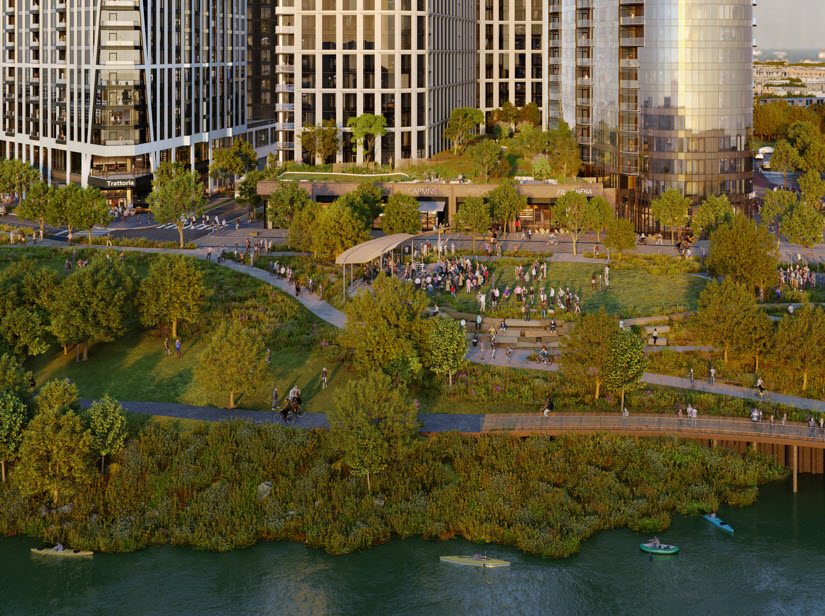 HRP Group
HRP Group Enhancing infrastructure in established communities requires creative solutions.
When an area is already developed, finding space for new structures and amenities can be challenging, and older structures come with their own issues.
The historic city of Alexandria, Virginia, has created 19 small area plans since 1992 to improve its various neighborhoods. One of these plans in particular – the Old Town North Small Area Plan – has grappled with the environmental challenges of an old power plant in the space.
A long road to redevelopment
Adopted in 2017, the Old Town North Small Area Plan is built on a vision to transform the area into a walkable neighborhood with a variety of amenities and public transit options.
But part of the plan rests on the site of the former Potomac River Generating Station, which Kevin Washington, a client executive at IMEG working on the project, described as “a gateway to the end of that particular small area plan.”
The site was permanently closed in October 2012, but power plant operations left the area polluted with petroleum hydrocarbons, according to the initial site characterization report conducted by NRG Energy, which previously owned the facility.
Following the approval of a corrective action plan by the Virginia Department of Environmental Quality, NRG conducted remediation activities over a period of several years. And in 2020, the site was purchased by HRP Group to redevelop the site into a transformative mixed-use district with commercial and residential spaces in addition to over 10 acres of publicly accessible open space as envisioned in the Old Town North Small Area Plan.
“The initial problem was that nobody wanted to undertake the environmental responsibilities of the site just because it was an old coal yard,” said John Helms, P.E., group leader and associate principal at IMEG and one of the civil engineers on the redevelopment project.
“There was a coal-fired power plant, so the underlying soils and land are not intact environmentally,” he continued. “It's a very big undertaking to be able to come in and take the soils out and have them professionally cleaned before they can be used for anything, so it is very hard financially to find somebody who's able to do all of that.”
Getting approval to develop the land required working with multiple parties that own land around the project’s borders. These groups include the National Park Service, which owns the land along the Potomac River, and Norfolk Southern, which owns adjacent land that includes abandoned rail tracks that used to actively run through this formally industrial neighborhood.
“We’re also working with (electric utility) Pepco because they have a substation on-site, which will remain,” Helms noted. “We’re working with them to make sure that their high-voltage lines are still intact, that there is no impact on their operations whatsoever.”
A vision for the future
Alexandria hopes to transform the Old Town North area into an arts and cultural district.
“An arts related building on the south side of the site would promote activation into the arts and cultural district that they want to extend into Old Town North,” said Helms.
Part of creating the envisioned district is making it easy to get to, and transit is a central part of the city’s plan. Major transit focus areas include connectivity to public transit and major roadways as well as optimizing roads for pedestrians and cyclists.
The plan notes the power plant as well as the rail corridor and some developed parcels as challenges to increasing transit connectivity throughout the area. To address these issues, the city intends to extend the existing street network into the power plant site while prioritizing accommodations for pedestrians and cyclists across the area.
The city also intends to adapt its public transit system to provide service between the power plant area and the two closest metro stations.
According to Helms, a trail that already runs through the area “will be expanded and beautified, making it almost like an entrance to that development in the frontage that brings people in pedestrian-wise.”
“I think the old power plant has been such an eyesore, and the community is just really ready for that site to be redeveloped,” said Washington.



